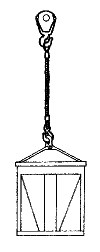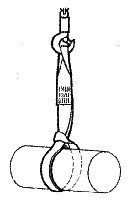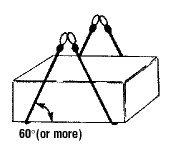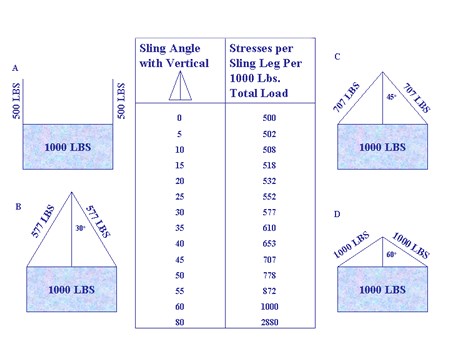Hitch Use for Crane Loads
Vertical Hitch
- In most cases use more than one sling. A single rope sling load tends to rotate in a twisting action that unwinds cables causing them to weaken.
- Do not use for lifting loose materials, long or unbalanced loads.

Choker Hitch
- The sling tightens on a load as it is lifted.
- Do not use on loose bundles.
- Use choker hitches at 75% or less of rated sling capacity.

Double basket hitches
- Balance loads by keeping slings apart.
- Prevent sling slippage by keeping the angle between the load and sling 60° or more.

Angle of hoisting affects a sling load limit:
- The angle affects the working load limit. The smaller the angle, the less load a sling can carry

Stresses are minimal for loads with slings held perpendicular to the load, as shown in Figure A. For distributing the load vertically on more than one leg of a sling, a spreader bar may be used. As shown in figures B-D, increasing the angle of the sling to the hook from 30 to 60 degrees increases the effective mass of the load from 1154 lbs to 2000 lbs, basically doubling the weight of the sling at 60 degrees. The chart offers a guide for assessing the effective angle of the sling to the relative weight. Thus, it is always better to limit the angle of the sling. Changes in sling angle must be accounted for in lifts that are close to the sling weight limit and/or for critical lifts (greater than 90% of the crane limit).
Weight vs. Angle


